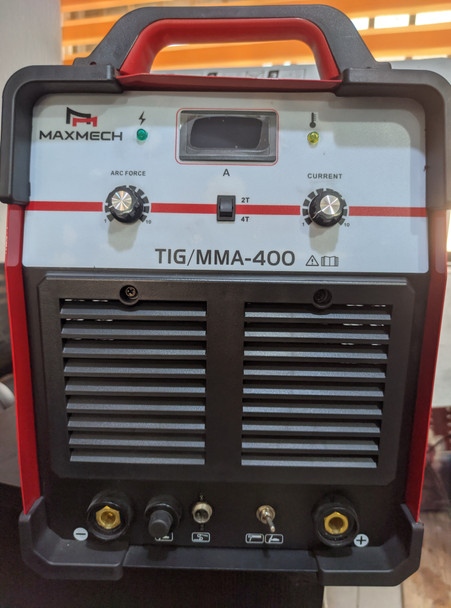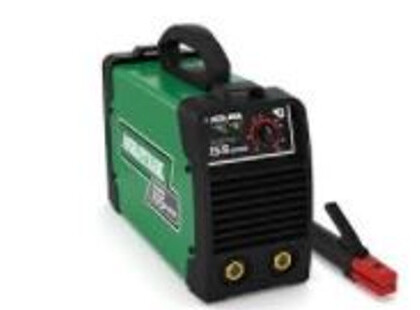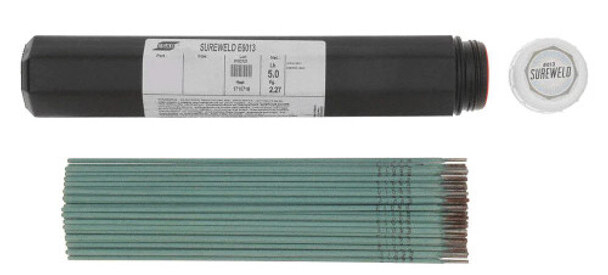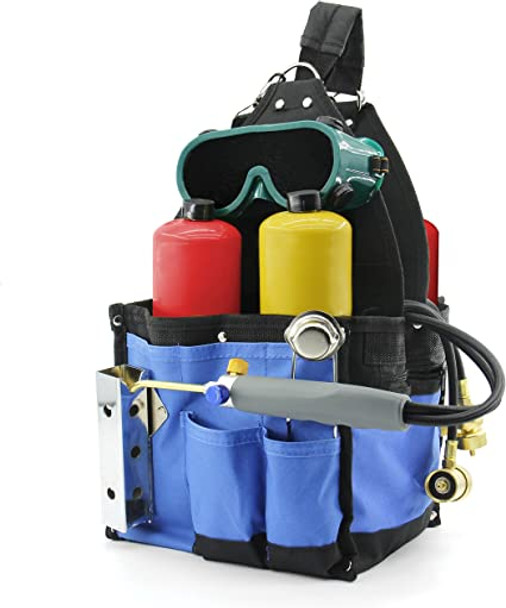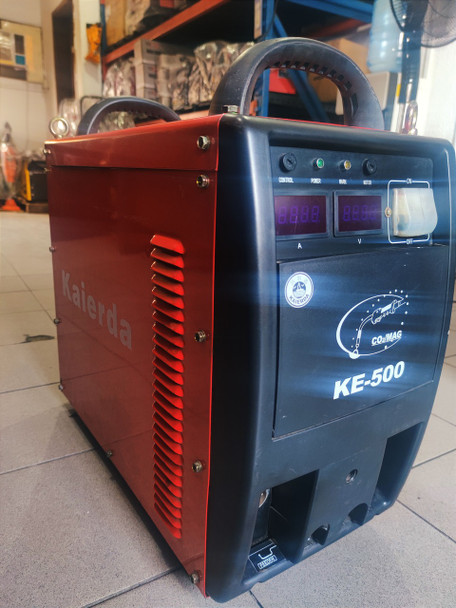The Evolution of Welding Technology: Past, Present, and Future
In the ever-evolving world of technology, welding has played a vital role in shaping industries and revolutionizing manufacturing processes. From its humble beginnings to its current state, the evolution of welding has been nothing short of remarkable. In this article, we delve into the past, present, and future of welding technology, taking a closer look at how this age-old practice has transformed over time.
Buy Online... Maxmech Inverter Welding Machine TIG/MMA-400
The History of Welding: From Ancient Techniques to Modern Methods
Welding has been a part of human civilization for centuries, with evidence of its existence dating back to ancient times. The earliest known welding techniques can be traced back to the Bronze Age, where metal objects were joined together using heat and pressure. However, it was not until the 19th century that welding started to take shape as a recognized industrial process.
The Industrial Revolution brought with it significant advancements in welding technology.
The discovery of electric arc welding in the late 1800s marked a turning point in the industry. This groundbreaking technique used an electric current to create an arc between the welding electrode and the base metal, resulting in a high-temperature welding process. The development of this method opened up new possibilities for joining metals and laid the foundation for future advancements in welding technology.
Key Developments in Welding Technology: Industrial Revolution and Beyond
The Industrial Revolution paved the way for further innovations in welding technology. The introduction of the oxy-fuel welding process in the early 20th century revolutionized the industry once again. This method utilized a combination of oxygen and fuel gases to produce a high-temperature flame, allowing for the fusion of metals. Oxy-fuel welding quickly became a popular choice for various applications, including shipbuilding and construction.
Another significant development in welding technology came in the form of gas metal arc welding (GMAW), also known as MIG welding. Invented in the 1940s, GMAW revolutionized the welding industry with its ease of use and versatility. This process involved the use of a continuously fed wire electrode and a shielding gas to protect the weld from contamination. GMAW quickly gained popularity in automotive and manufacturing industries, thanks to its ability to produce high-quality welds at a faster rate.
Buy Online... Electrical welding machine Inverter 155 Super Askaynak
Present-Day Welding Techniques and Technologies
In the present day, welding technology continues to push boundaries and set new standards. With the advent of computer numerical control (CNC) systems, industries can now achieve higher levels of productivity and precision. CNC welding machines offer precise control over the welding process, ensuring consistent and accurate results. These machines are commonly used in the aerospace, automotive, and construction industries, where precision is crucial.
Robotic welding systems have also become an integral part of modern welding technology. These automated systems utilize robots to perform welding tasks with speed and accuracy. Robotic welding offers numerous advantages, including increased productivity, improved weld quality, and reduced labor costs. As a result, industries are increasingly adopting robotic welding systems to streamline their manufacturing processes.
Advancements in Welding Materials and Equipment
The evolution of welding technology has not been limited to techniques and processes alone. Advancements in materials and equipment have played a significant role in shaping the industry. The development of new welding consumables, such as flux-cored wires and advanced shielding gases, has improved the quality and efficiency of welds. These consumables provide better control over the welding process and offer enhanced protection against defects.
In addition to welding consumables, advancements in welding equipment have also contributed to the evolution of the industry. Modern welding machines are equipped with advanced features, such as digital controls and inverter technology, which allow for precise control over the welding parameters. These machines offer increased energy efficiency, improved arc stability, and better overall performance.
Buy Online... Esab Stick Welding Electrode 3/32 x 14in 5kg E6013 Sureweld series
Automation and Robotics in Welding
The integration of automation and robotics has transformed the welding industry in recent years. Robotic welding systems have become increasingly sophisticated, capable of performing complex welding tasks with minimal human intervention. These systems offer improved accuracy, consistency, and speed, making them ideal for high-volume production environments.
Automation and robotics have not only improved the efficiency of welding processes but also enhanced workplace safety. By eliminating the need for human welders to perform repetitive and potentially hazardous tasks, robotic welding systems reduce the risk of injuries and create a safer working environment.
The Future of Welding Technology: Emerging Trends and Possibilities
Looking ahead, the future of welding technology holds exciting prospects. One of the emerging trends in the industry is the adoption of 3D printing, also known as additive manufacturing, for welding applications. 3D printing allows for the creation of complex metal structures with unprecedented precision and efficiency. This technology has the potential to revolutionize the manufacturing industry by enabling the production of customized, lightweight, and highly durable metal components.
Another area of interest is laser welding, which offers several advantages over traditional welding methods. Laser welding uses a concentrated beam of light to melt and fuse metal parts together. This process provides excellent control over heat input, resulting in minimal distortion and precise welds. Laser welding is particularly suitable for applications that require high precision, such as microelectronics and medical device manufacturing.
Buy Online... Hellog Welding Oxygen MAPP gas Cylinder Torch Kit.
Impact of Welding Technology on Various Industries
The evolution of welding technology has had a profound impact on various industries. In the automotive sector, advancements in welding techniques and materials have led to the production of lighter and more fuel-efficient vehicles. Welding technology has also played a crucial role in the construction industry, enabling the fabrication of complex steel structures and improving the overall quality and durability of buildings.
The aerospace industry has benefited greatly from welding advancements as well. Welding technology has enabled the production of lightweight aircraft components, resulting in increased fuel efficiency and reduced emissions. Furthermore, the oil and gas industry relies heavily on welding for pipeline construction and maintenance, ensuring the safe and efficient transportation of resources.
Challenges and Opportunities in the Welding Industry
While welding technology continues to advance at a rapid pace, the industry also faces various challenges. One of the key challenges is the shortage of skilled welders. As experienced welders retire, there is a growing demand for new talent with expertise in the latest welding techniques and technologies. To address this challenge, training programs and apprenticeships are being developed to attract and educate the next generation of welders.
Another challenge is the need for sustainable welding practices. As industries strive to reduce their environmental impact, there is a growing demand for welding processes and materials that are energy-efficient and environmentally friendly. The development of new welding technologies, such as friction stir welding and laser welding, offers promising solutions to these sustainability challenges.
Buy Online... Kaierda Gas-Shielded Welding Machine CO2/MAG KE-500
Conclusion
The evolution of welding technology has been a journey marked by remarkable advancements and innovations. From its ancient origins to the present day, welding has played a vital role in shaping industries and driving progress. The future of welding holds even greater possibilities, with emerging trends such as 3D printing and laser welding promising further advancements in speed, precision, and sustainability.
As industries continue to embrace automation and robotics, the demand for skilled welders who can operate and maintain these systems will only grow. Additionally, the welding industry must address challenges such as the shortage of skilled labor and the need for sustainable practices.
In this ever-evolving landscape, staying up-to-date with the latest welding techniques, technologies, and materials is crucial. By embracing innovation and investing in training and education, industries can harness the full potential of welding technology and drive progress in the manufacturing world. The journey of welding technology is far from over, and the possibilities for future advancements are truly limitless.
Please contact us whenever we may be of further assistance.
Related Articles:
A Comprehensive Guide to TIG Welding and TIG Welding Machines
12 essential welding equipment for fabrication work
The Benefits of Inverter Welders: Why They're a Game-Changer
Beginner's Guide: Basic Welding Techniques and How to Master Them


